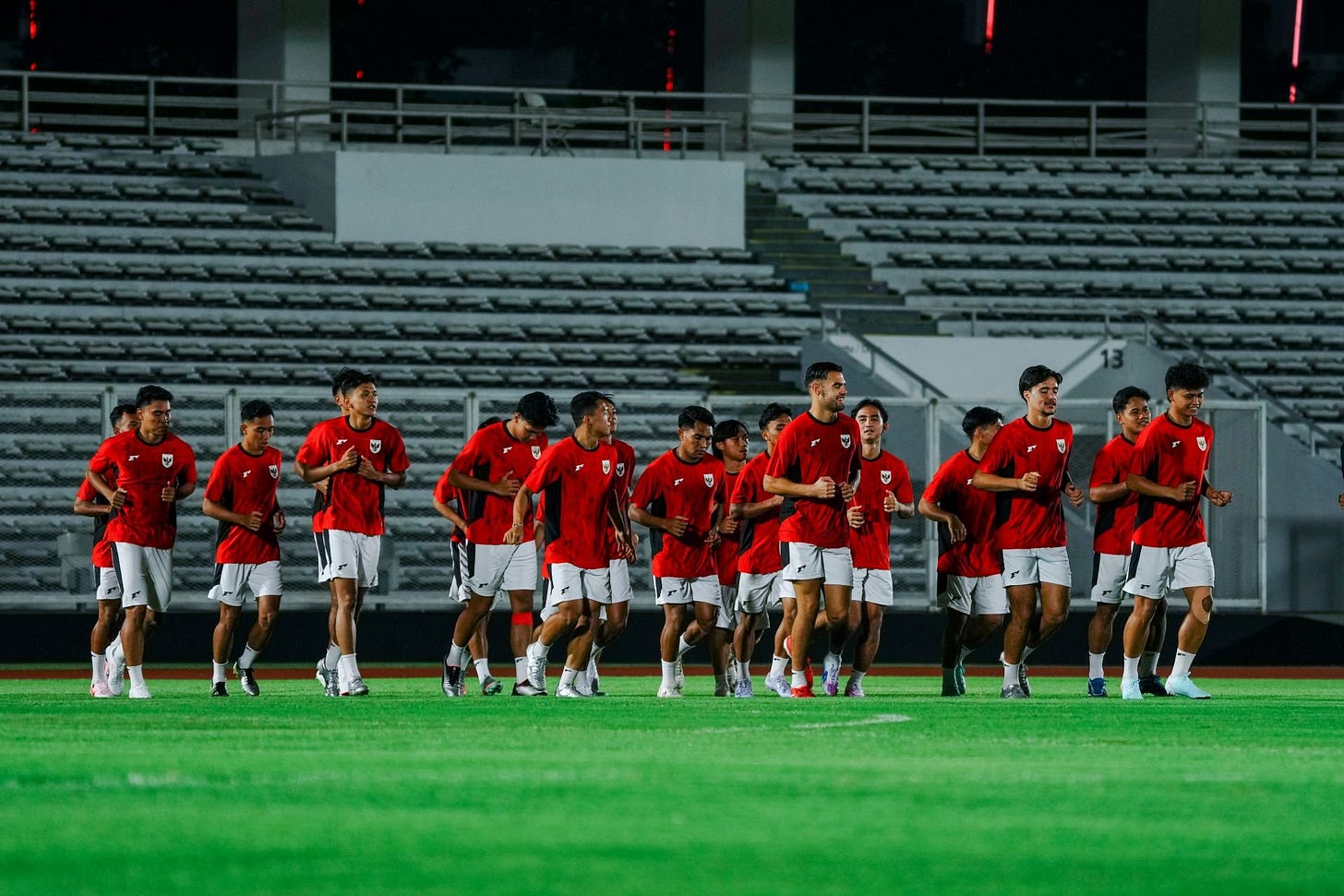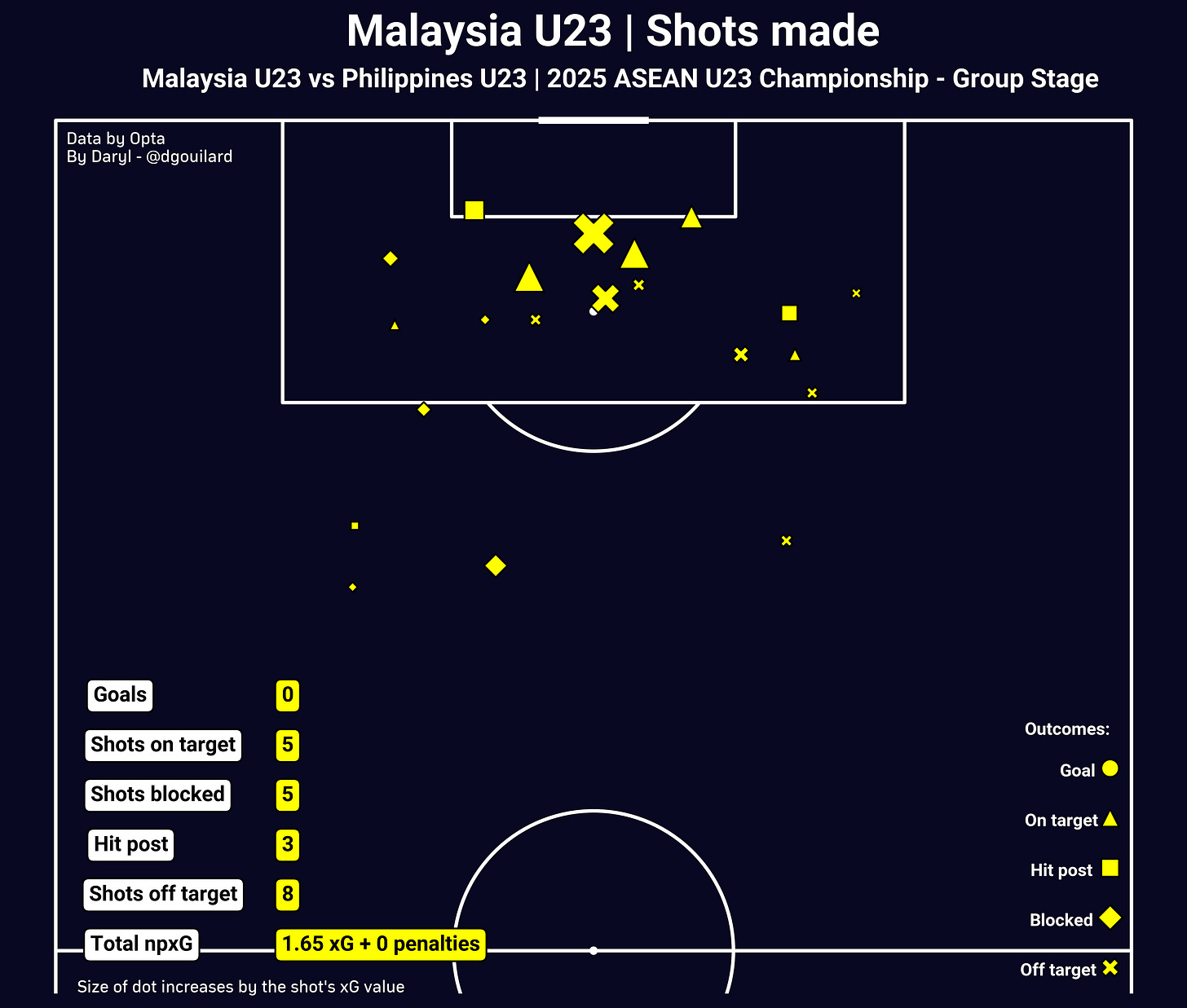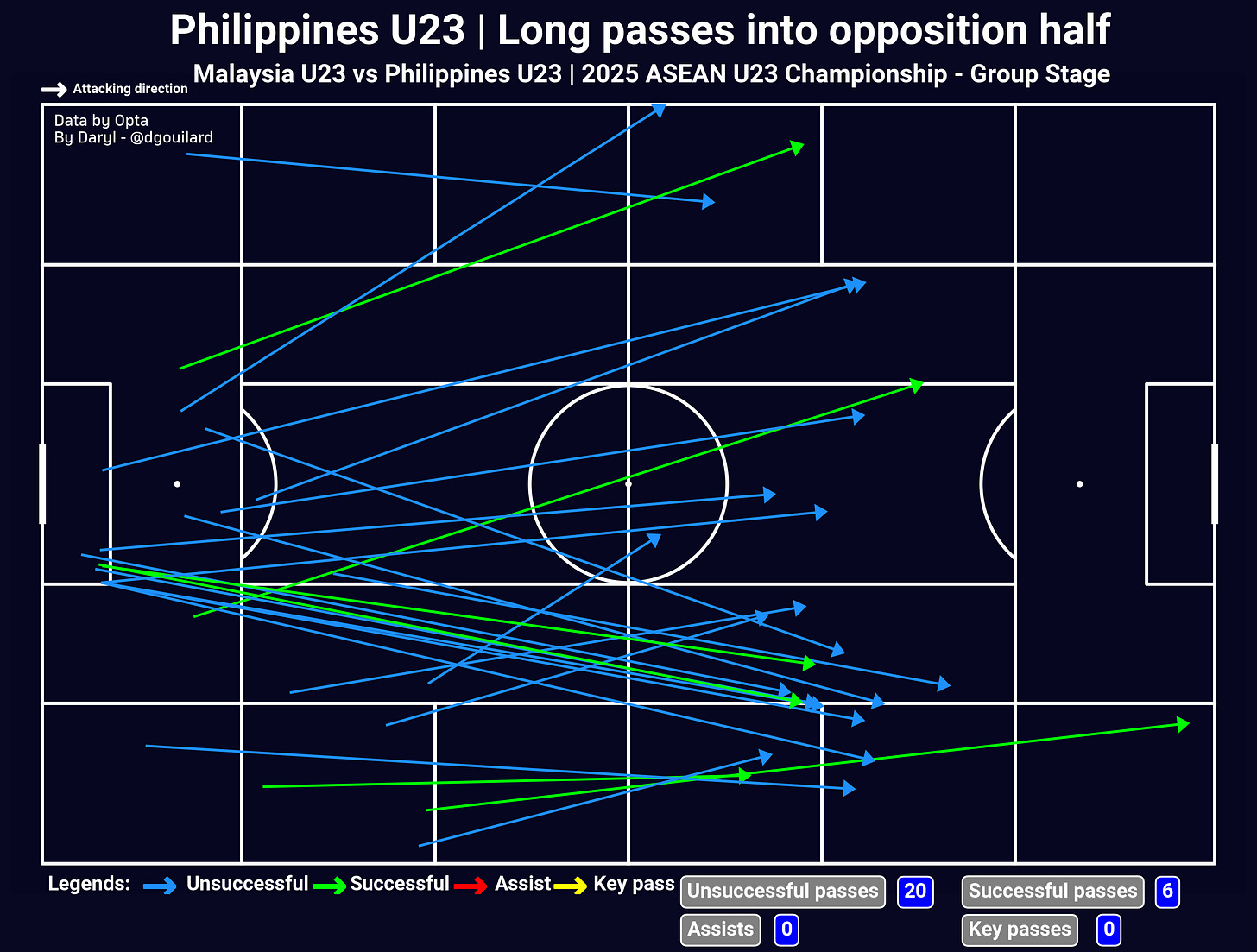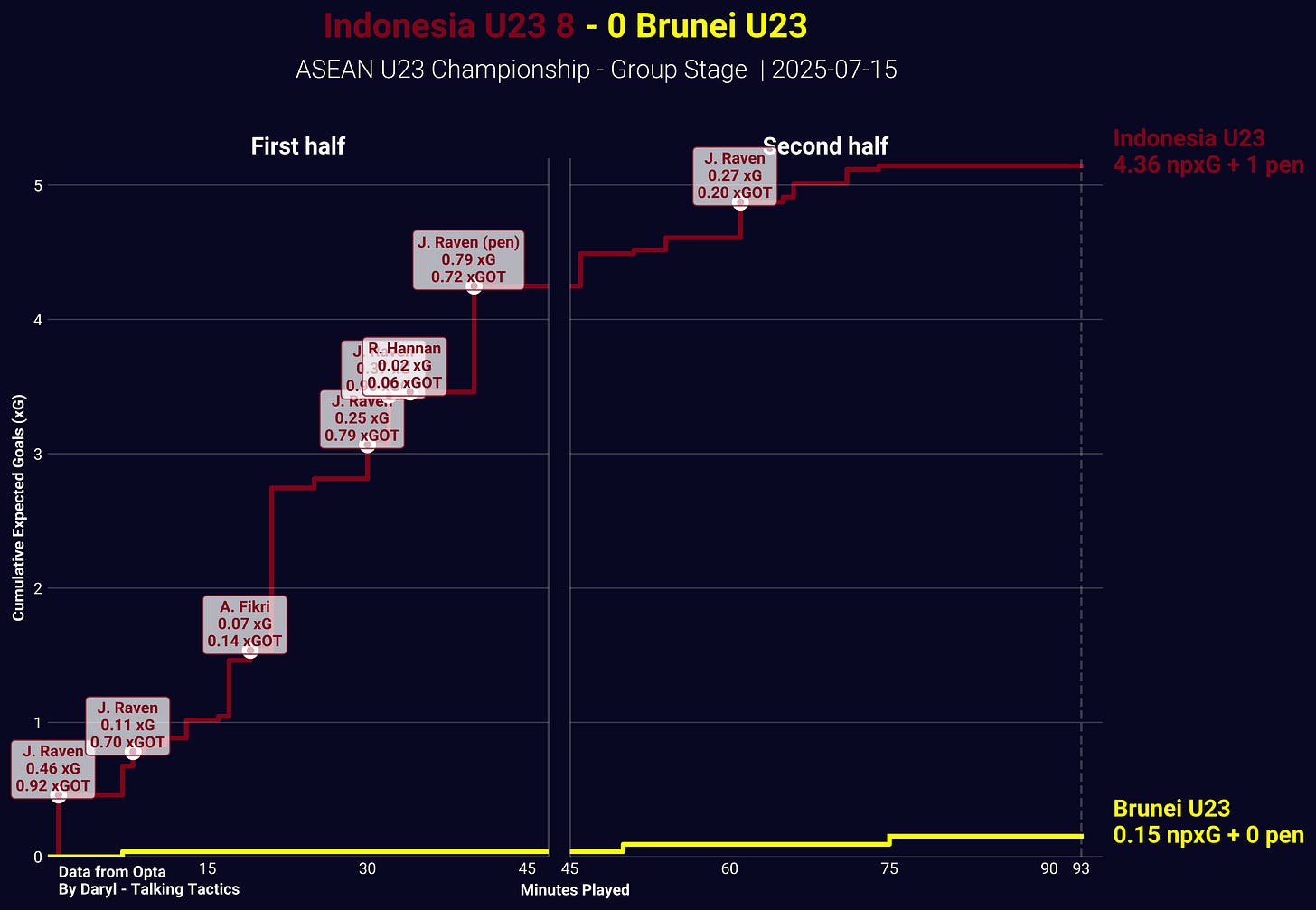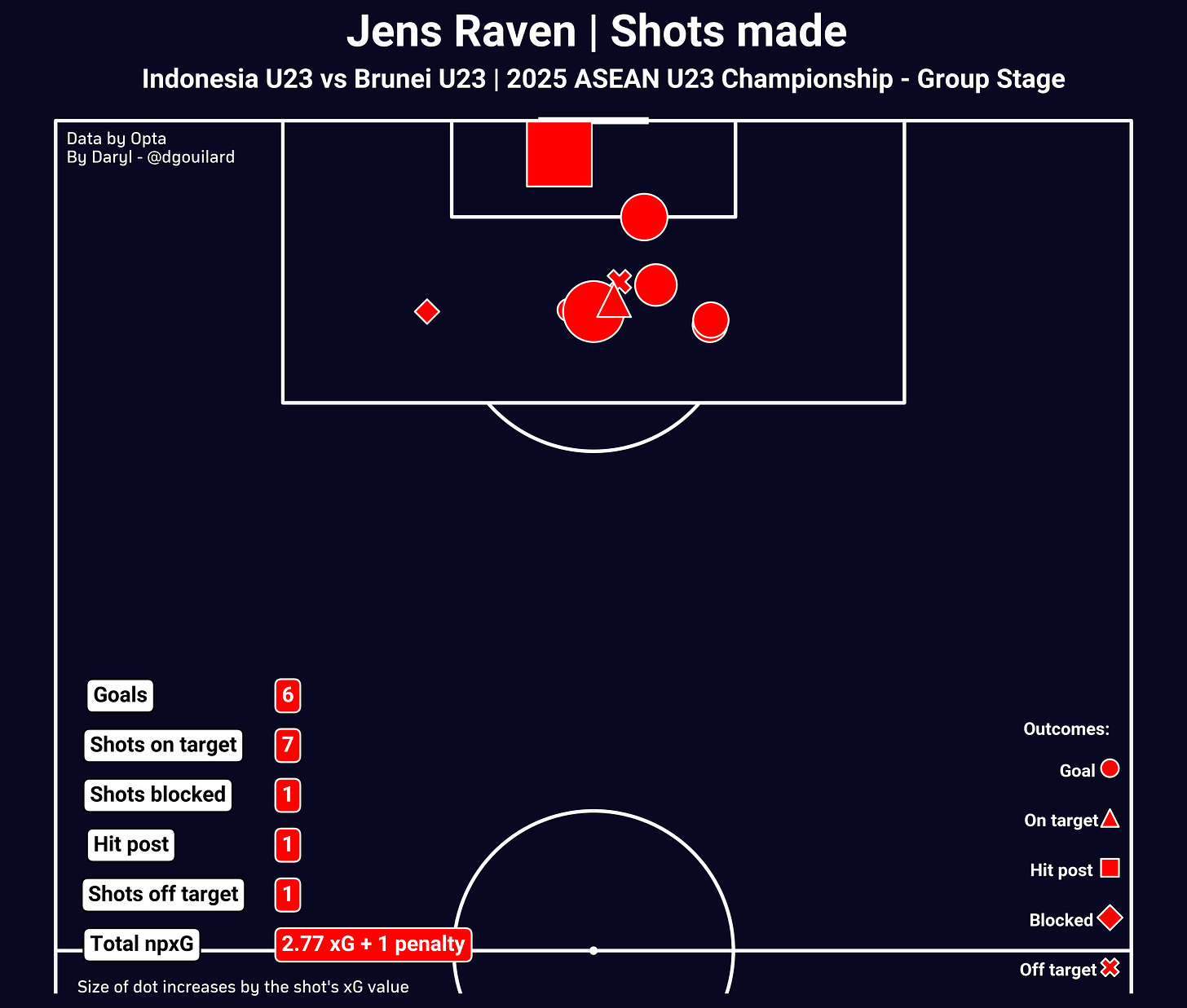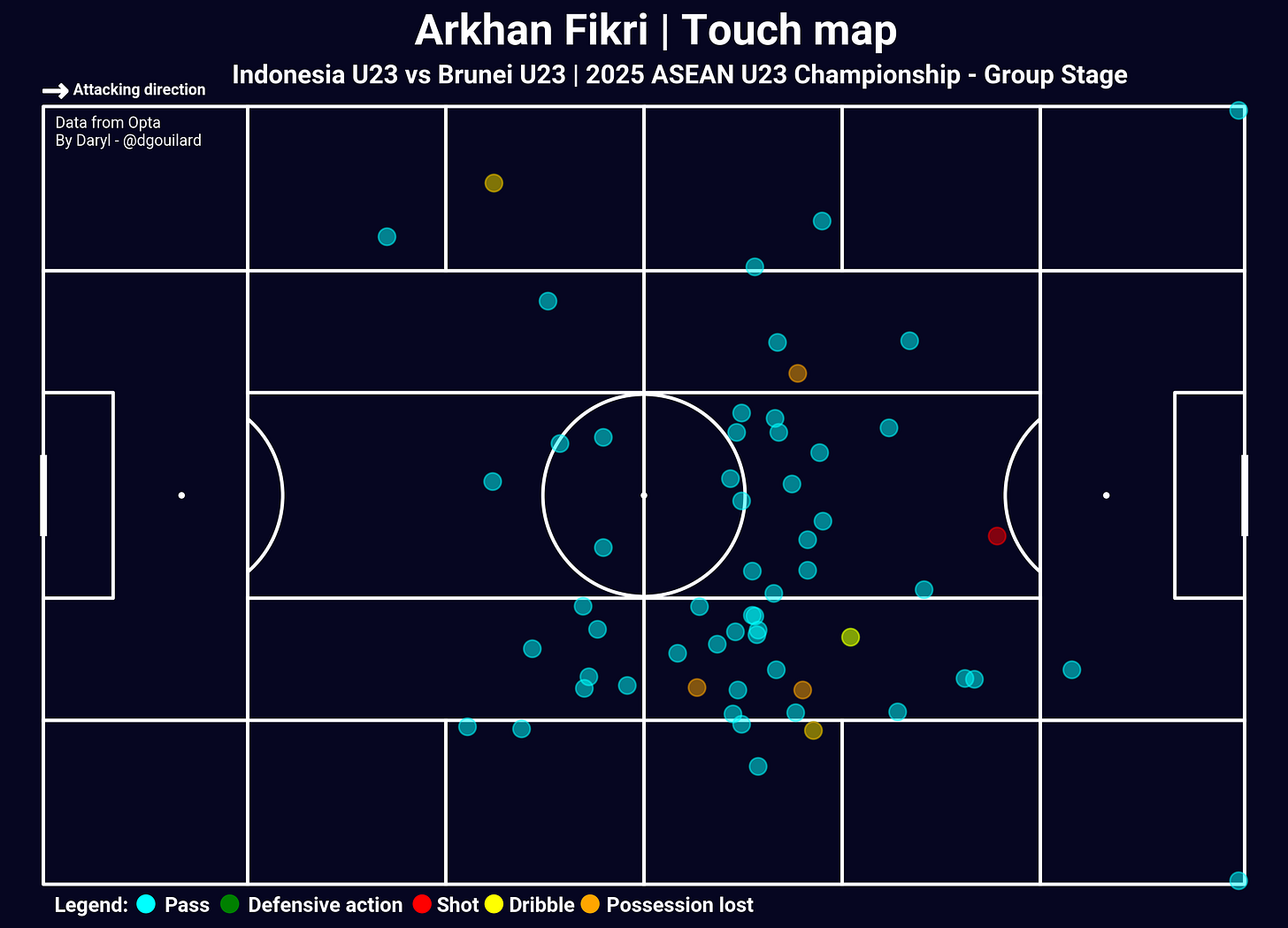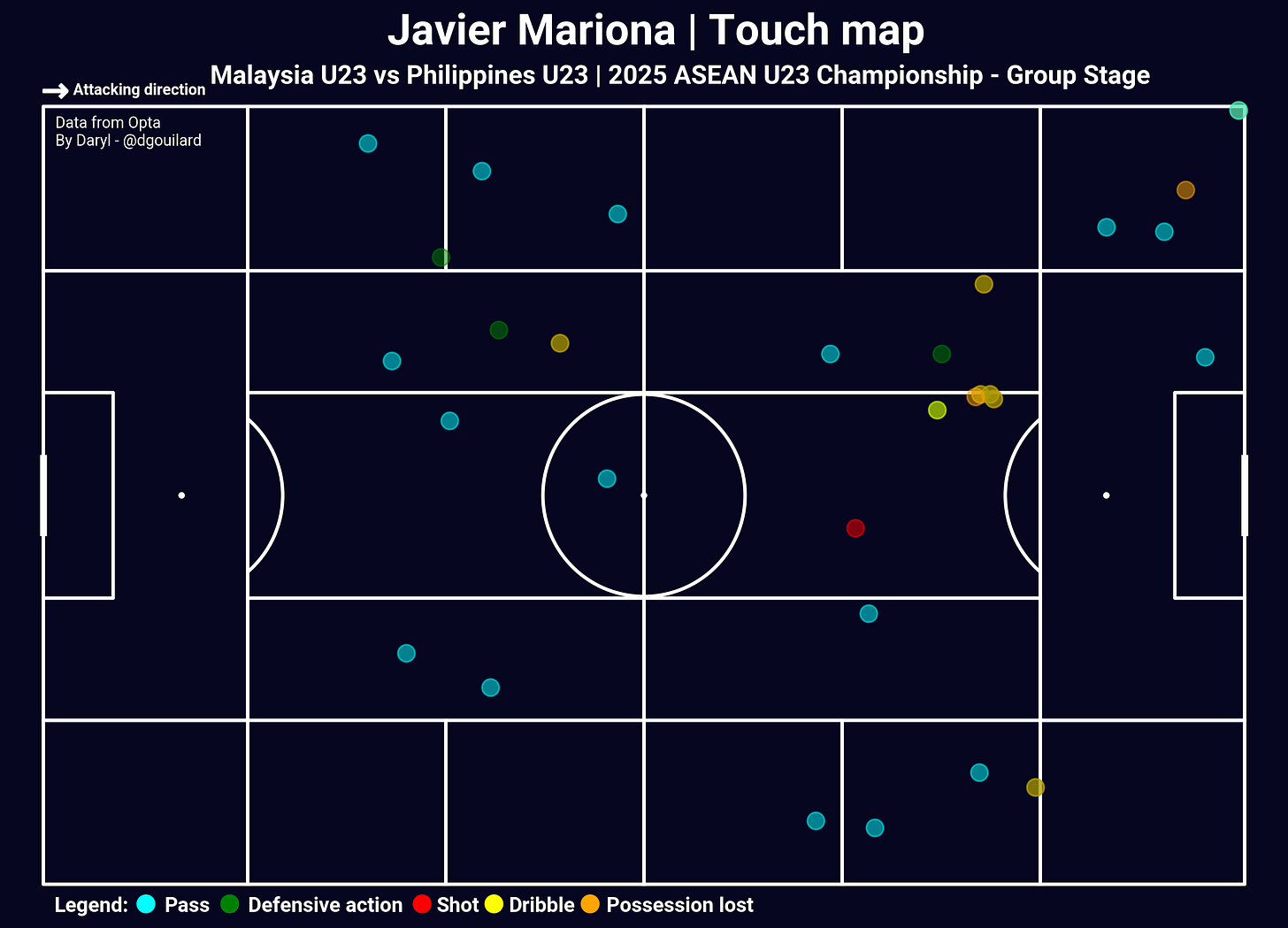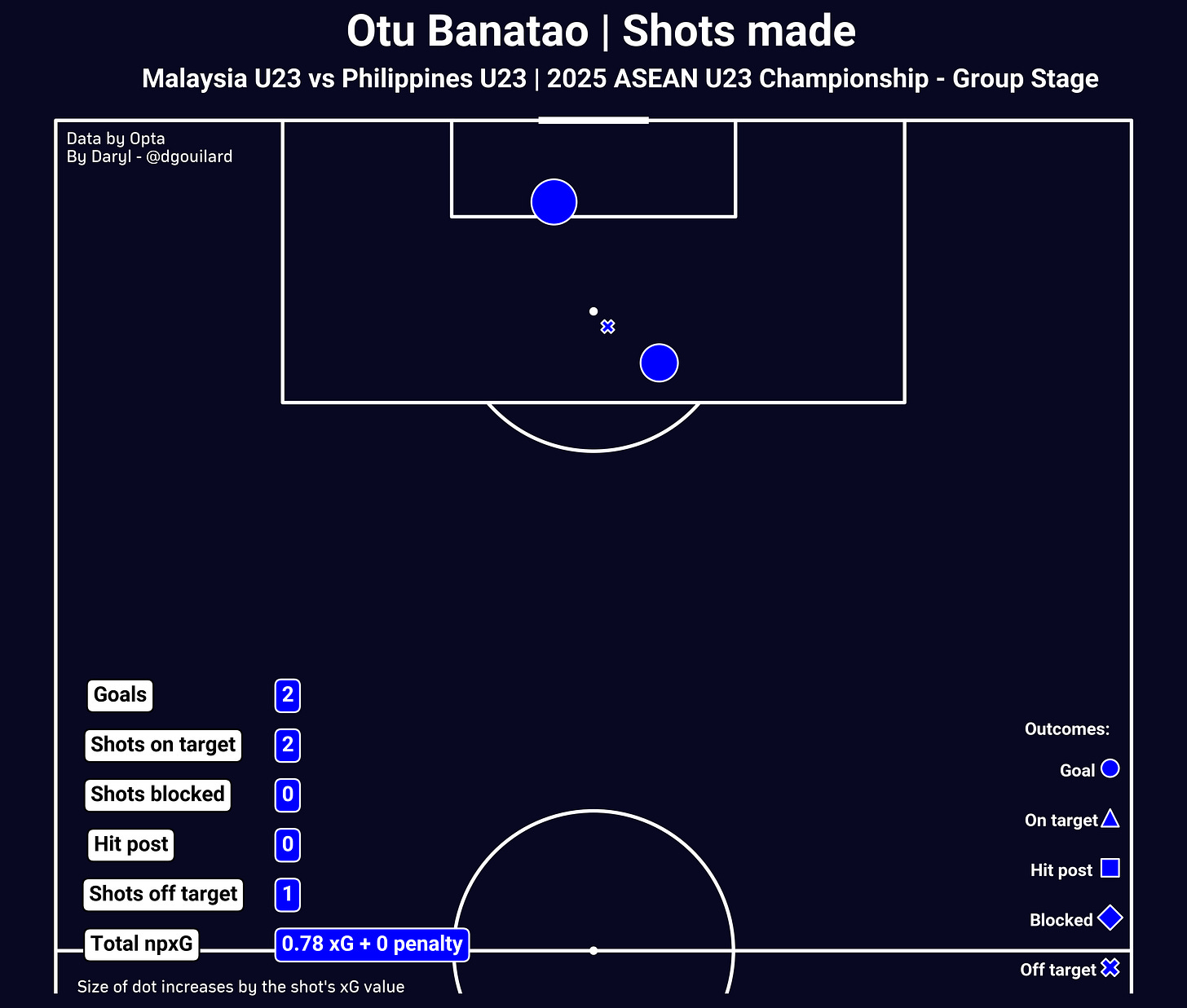ASEAN Cup Diary - U23 Edition: Day 1
The tournament kicks off with a festival of goals in Indonesia!
The stage has been set in Indonesia for the return of the ASEAN Cup…for the Under-23s! It does not mean that this tournament lacks quality though, because a large proportion of players who got called up have played in the earlier, first-team ASEAN Cup at the beginning of the year. They will be bringing experiences and the star power to guide their nation to, potentially, a semi-final spot. Moreover, this will be the opportunity for domestic talents to showcase their ability and earn themselves a spot in the first-team for many teams who are looking towards the future.
As such, the stakes are high as always, along with the pride of each nation is on the line…and also social media wars. Let’s not wait any further and head into the first two matches of this year’s U23 Championship!
Malaysia 0-2 Philippines
The feeling that I had going into this match was that both teams were on the same playing field and, even though Malaysia might have been seen as the slight favourites, I thought the Philippines could give them a tough time and surprise many like they did at the ASEAN Cup earlier this year. And Garrath McPherson’s side definitely delivered in the first half and surprised me a bit with how they approached this game.
The Filipino players were very energetic and active off the ball, chasing down Malaysia from inside their own half and attempted to press them during the first 15 or 20 minutes of the match. It did not even feel like they were aimlessly pressing either because the players’ off-ball runs showed that they wanted to squeeze Malaysia into the middle of the pitch, where their 4-1-2-3 system was set up to go man-to-man and prevented the Malaysian players from having too much time on the ball. They also managed to generate a few turnovers and even turned some into shots, but they were a bit too quick after regaining possession to create anything meaningful and dangerous.
After 30 minutes, the Philippines might have thought that they could not sustain their press throughout the whole match and decided to drop back into a mid-to-low block, which turned out to be the better decision for them (I will explain why in just a bit). Their focus turned to defending the box and they managed to prevent Malaysia from entering dangerous shooting locations, which forced them to finish the match with only 1.65 xG. It is also worth noting that, while Malaysia did underperform their expected numbers, most of their dangerous chances were either blocked or saved by the Philippines’ goalkeeper Nicholas Guimarães.
Speaking of Guimarães, while his shot-stopping ability saved the Philippines on a few occasions, there was a pretty obvious problem with the Filipino goalkeeper. Whenever he was involved in an aerial challenge with Malaysia’s Fergus Tierney or crosses coming into the box, he almost always opted to punch the ball away instead of claiming it safely. That was minor signs of his poor handling, but that weakness of his was exposed on a few more times, and big times. He also parried quite a few shots away and straight into the direction of a Malaysian player heading into the box, but he was slightly lucky to get away with them. Given how obvious Guimarães’ weakness was, I would not be surprised if Indonesia try to capitalise on that more often when they face the Philippines.
At the other end, while Malaysia showed a lot of frustration by not getting into the right positions to score, the Philippines only needed very few chances to get the result that they wanted. Since they did not have control of the ball for most of the match, McPherson’s side opted to use goal-kicks to their advantage and had Guimarães distribute the ball long from inside the penalty box, quite often finding pacey wingers like Javier Mariona and Uriel Dalapo in behind Malaysia’s high defensive line. If they had only done it a few times, I would have written it off as an individual effort, but the visualisation below showed that it was an intentional decision from Garrath McPherson and his team.
The Philippines’ opening goal came from a very similar situation. While this replay did not show the entire build-up sequence, you can still find it in the full-match replay. The sequence started from Guimarães playing the ball out to right-sided centre-back Noah Leddel, who then sent a great long-ball from inside the Philippines’ penalty box all the way past the halfway mark and in behind Malaysia’s high defensive line, which was also where Mariona was at as he brought the ball down and dribbled to Malaysia’s penalty box, tricking a Malaysian defender at the same time while waiting for striker Otu Banatao to reach the box. From there, a simple low cutback allowed Banatao to reach the ball and send it past Zulhilmi Sharani.
Malaysia, on the other hand, relied very heavily on crosses from both sides of the pitch into the box for Tierney. But going up against the Philippines who have defended the box well and marked the Scottish-Malaysian striker out of the first half was always a tough task to create shooting chances. The second half was slightly better since the Philippines might have felt the physical impact of their transitional-focused style where players had a bit of a tough time trying to get back into their defensive third and regroup back into their 4-4-2 defensive shape. But when more spaces opened up for them to get into better shooting positions, it was their own players who wasted the chances that they created. On occasions where they managed to create something meaningful, their effort was not enough to beat Guimarães.
And so, while enjoyed 70% of possession, Malaysia were not able to find a way into the Philippines’ goal. On the other end, being clinical in front of goal through a transitional-focused style helped the Philippines secured very important three points that may or may not determine whether they will qualify for the semi-final or not later into the group stage. Malaysia only have themselves to blame and will now be in a tough position if they want to go through.
Indonesia 8-0 Brunei Darussalam
I’m afraid I will have to talk a lot about Indonesia for this quick summary because the host completely destroyed Brunei after just 35 minutes of the match and basically just had fun for the rest of it. However, it was probably not fun at all for the away side to chase the ball for the majority of the match, because they only controlled possession for 15% of the match’s time, and I barely remember any noticeable in possession moments coming from Brunei besides a couple of free-kicks that were nowhere near Indonesia’s goal.
The moment Indonesia got the ball from kick-off, it just seemed like they never lost it while also made very good use of it. There were not many moments where the host felt static or aimlessly passing the ball around at the back. Whenever the centre-back duo Brandon Scheunemann and Muhammad Ferarri had the ball, one of the three midfielders would immediately come close to pick up the ball and then send it forward, either by exploiting the space in behind Brunei’s midfielders or sending it wide to the full-backs and wingers. The host moved the ball a lot, and the players also ran a lot, which was probably for disrupting Brunei’s 4-1-4-1 mid-to-low block that had very few occasions where they managed to stay in shape.
In between the lines, Indonesia players used quick passes and one-twos to bring teammates around them into the attacking move, while also attempted to get the ball out wide for the oncoming full-back or winger to advance into the final third. The host were slightly wing-reliant for the first 20 minutes or so, but afterwards, spaces began to be opened up more in between Brunei’s defensive lines, which allowed Indonesia to be a lot more active inside the half-spaces and right in front of the penalty box, where Arkhan Fikri and Rayhan Hannan scored their goal.
It is hard not to talk about the Indonesian midfield trio in the middle in Toni Firmansyah, Arkhan Fikri, and Robi Darwis because a lot of the host’s attacks ran through them and they played a huge part in unlocking Brunei’s defensive block. Probably slightly inspired by Paris Saint-Germain’s midfield trio, they all had the technical quality to control the ball and get past opposition’s defenders. But the main thing that drew my comparison was the fact that they constantly swapped position with each other and used their off-ball runs to create space in between the lines for Jens Raven to receive the ball. When Fikri got subbed off after half-time, it was possible to spot that Raven had to abandon his position as a traditional #9 who sat in between the centre-backs in order to drop deep and help his teammates out with progressing the ball.
Just a small thing, but I thought it was risky for Brunei to play with a high defensive line very early into the match. As they were expected to lose heavily and came up against players who were far superior technically, playing with a high defensive line exposed them to plenty of passes in behind that freed up Rayhan Hannan on the right-hand side in particular. On many occasions within the first 20 minutes, Indonesia’s #8 found himself breaking through Brunei’s defensive line either with or without the ball down the right wing without plenty of pressure and headed into free space to create chances for Raven inside of the box or for oncoming midfielders who were arriving on the edge of the penalty box.
As much as I have praised Indonesia for their performance and dominance, these should be taken with a grain of salt considering they were playing against a far inferior opponent in Brunei. It was very clear that Brunei’s players were levels behind since they did not react in time with what the Indonesian players have done and they were skipped past like they were not there on multiple occasions.
I should also point out that the second half of this match presented a solution to stop Indonesia from going rampant. As mentioned earlier, when Fikri got subbed off, Raven had to take on the responsibility of creating chances for teammates around him, which meant that he had to move away from the penalty box in order to be in deeper positions to pick up the ball. The Dutch-born striker had shown that he was the most effective when being inside the penalty box and picking up through balls or crosses from teammates, but if he is absent inside that area, it might mean that Indonesia’s best goalscorer will be slightly less effective when it comes to scoring goals. However, that also relies on taking both Fikri and Hannan out as well, or at least, limit their effectiveness in front of goal, like how Indonesia were only able to score a single goal in the second half after both players got subbed off, albeit they did start to slow down a bit.
There is no doubt that Indonesia ran wild in their opening match of this year’s U23 Championship. They came out strong, did not leave Brunei a bit of air to breathe, and entertained the home fans with seven goals inside the first 47 minutes. While that performance has definitely turned them into one of the strong favourites to win the tournament, the second half showed me that they can be weaken when certain players were not on the field. Obviously they still have quality players who was not used off the bench, but hopefully that was not a blueprint for stronger teams in the competition to beat them at their home grounds.
Standout players
Obviously the spotlight of the night has to go to Indonesia’s Jens Raven. He delivered a performance that was class apart from almost everyone on the pitch, which was expected from a player who was trained in Europe. While his numbers (6 goals from 7 shots on target and from 2.77 non-penalty xG) were already quite impressive, I do not think they tell the full picture of Raven’s performance, which is always one of the downsides of event-level data.
On many occasions, Raven’s off-ball runs freed him from being marked by a Brunei’s defender and allowed him to pick up the incoming cross or through ball inside of the penalty box. Then, his composure whenever he was in a 1v1 with the goalkeeper, which he utilised to bring the ball to his preferred right foot for a more powerful and precise shot. The placement of his shots also made it a lot tougher for the goalkeeper to save them, which is reflected through the fact that none of the Expected Goals on Target (how hard it is to save a shot) of all of his non-penalty goals in the first half (0.923 xGOT, 0.702 xGOT, 0.793 xGOT, 0.902 xGOT respectively) is below 0.7 xGOT, meaning all four non-penalty goals that Raven scored were hard to save.
He also contributed massively to the team’s progressing plays as well through the few occasions where he dropped deep to receive the ball from midfield and brought it forward for teammates around him. Though, for a striker who is as lethal inside of the penalty box as he was, I think removing him from the area where he was the most effective in might not be a good idea and it contributed negatively to Indonesia inside the second half.
As effective as Raven were inside of the penalty box, the Dutch-born striker would have had a slightly tougher day if Arkhan Fikri did not play. I have already highlighted him after Indonesia’s first ASEAN Cup match from the end of last year where he played more as an #8 and operated slightly deeper. But in this match, Fikri was almost a #10 as he had the support behind from Firmansyah and Darwis, which allowed him to be more free to roam and receive the ball in between Brunei’s defensive lines.
He acted as the link between the centre-backs + Firmansyah and the attackers up front by constantly offering to receive the ball, then using his technical quality to turn and face forward, before making a pass that would sent the wingers or Raven in behind. Immediately after subbing him off in the second half, Indonesia felt his absence since there was no one who took on Fikri’s responsibility and Raven had to, which meant he had to abandon his responsibility of being a poacher. The further into the tournament Indonesia will go, I think Fikri will grow to be more important over time.
From a #10 to a winger, and I want to highlight the Philippines’ Javier Mariona after he spearheaded a slightly surprising, but very important victory for his nation. Also another player who appeared at the last ASEAN Cup, Mariona is expected to get significantly more minutes during this tournament now that he is one of the key players instead of being a rotational option for Alex Monis, who would be in the age range for this tournament as well.
Even though the Philippines did not control a lot of the ball, Mariona still managed to show what he could do whenever he had the opportunity. The first standout moment was his assist for Otu Banatao’s opening goal where he took on a Malaysian defender, tricked and then went pass him, before squaring the ball for an easy shot. There were a few more moments like that in which the team used his pace and dribbling ability as the way to bring the ball forward and start the counter-attack, which did help a bit. His willingness to do some defensive work also proved to be massively important for the team, especially down the left-hand side where Malaysia wanted to exploit more often. And in a similar vein to Fikri, I do expect Mariona’s influence to grow more and more should the Philippines go on and advance through to the semis.
One player who will definitely become an important part of this Philippines side moving forward is Otu Banatao, who scored both of the team’s goals to seal all important three points. I was wrong to assume that Uriel Dalapo will compete with Dov Cariño for the striker spot in my preview piece, but in fact Banatao already had that spot locked in and now it is even more secure.
Similar to Mariona, Banatao also did not have many opportunities to showcase his on-ball ability as he had to do more defensive work against Malaysia’s dominance in possession. However, when presented with the two important chances, he did not waste them and delivered two well-placed shots that were tough to save for the Malaysian keeper Sharani. While Raven might now be the outright favourite for the golden boot race, I think Banatao will remain in the conversation as long as the Philippines are still in the tournament given the glimpse of his finishing quality that we got to see.
And with that, the opening day of the ASEAN U23 Championship did not disappoint most fans. There were goals, a bit of surprises sprinkled in, and plenty of fast-paced football that Indonesia and the Philippines have shown. Both teams have put themselves in very good positions heading into the second matchday, where they will meet each other to determine who will be the first team to go through to the semi-final and who is left to battle for the single second-placed spot.
The second day of the tournament will feature teams from group B and C except for the two favourites, Vietnam and Thailand. It will be interesting because all four remaining teams can be seen as on the same playing field and will have the chance to showcase what they can do. So, even though it might not be as fun as watching the top nations playing, there might still be a few surprises awaiting. Until then, I will see you on the second day!


